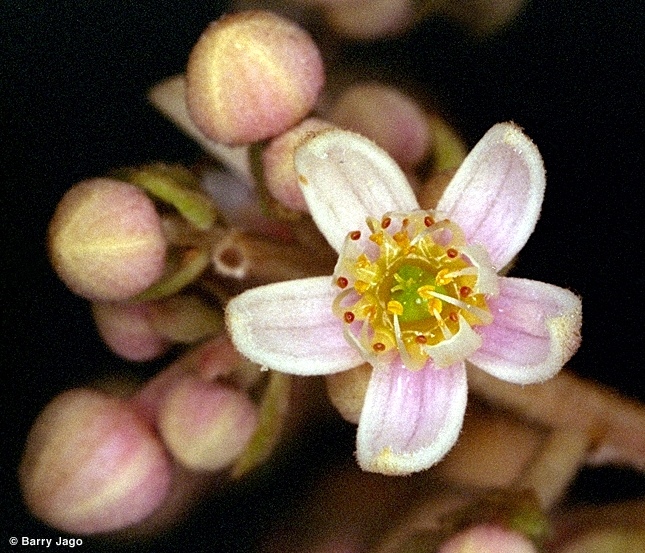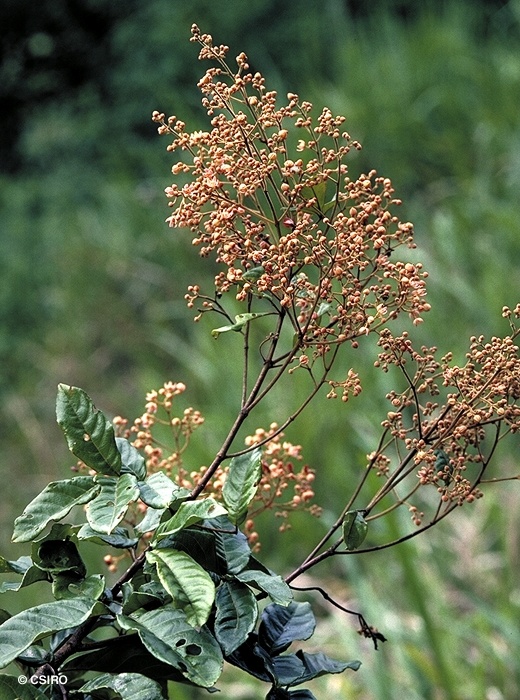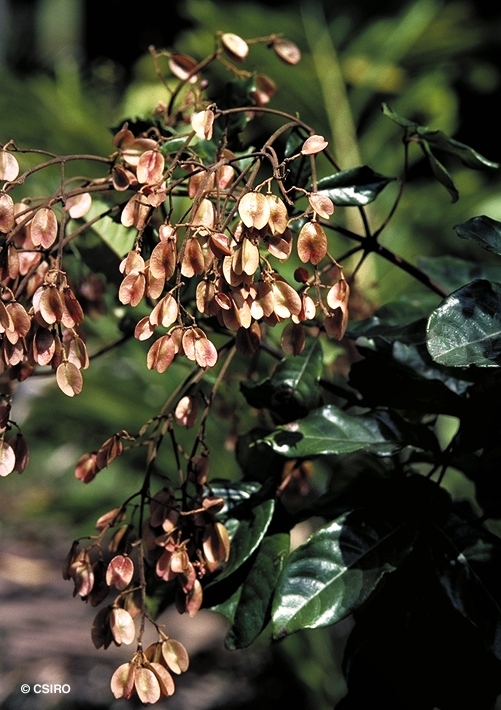Australian Tropical Rainforest Plants - Online edition
Gillbeea adenopetala F.Muell.






Mueller, F.J.H. von (1865) Fragmenta Phytographiae Australiae 5: 17. Type: In silvis ad sinum Rockinghams Bay. Dallachy.
Pink Alder; Alder, Pink
Leaflet blades about 6-15 x 2.5-5 cm. Undersurface glabrescent, relatively shiny, with scattered hairs on main veins. Stipules large relatively narrow and weakly dentate, about 6-10 x 3-4 mm with a conspicuous midrib. Stipules held more or less at right angles to the twig to form a skirt or flange.
Fruits glabrous, 3-winged, rarely 4-winged, fruits + wings about 20 x 15 mm. Wings conspicuously reticulately veined.
Cotyledons oblong, about 10-14 x 3-6 mm, hairy on the upper surface, stipules 2 and deeply bifid in very young growth, soon becoming 4. At the tenth leaf stage: leaf blade obovate, margin serrate; hairy on the upper surface; stipules 4, shortly petiolate, margins serrate; petiole and stem densely hairy. Seed germination time 14 to 25 days.
Not normally used for sawlogs as trees may have lenses of included bark.
Wood specific gravity 0.53. Cause et al. (1989).





